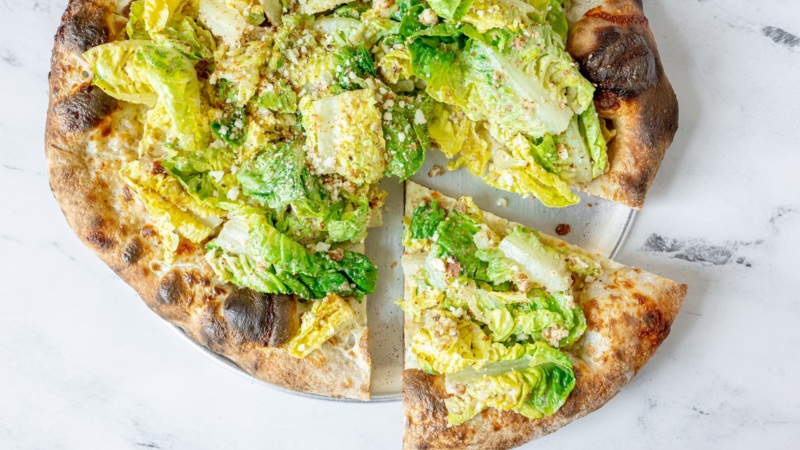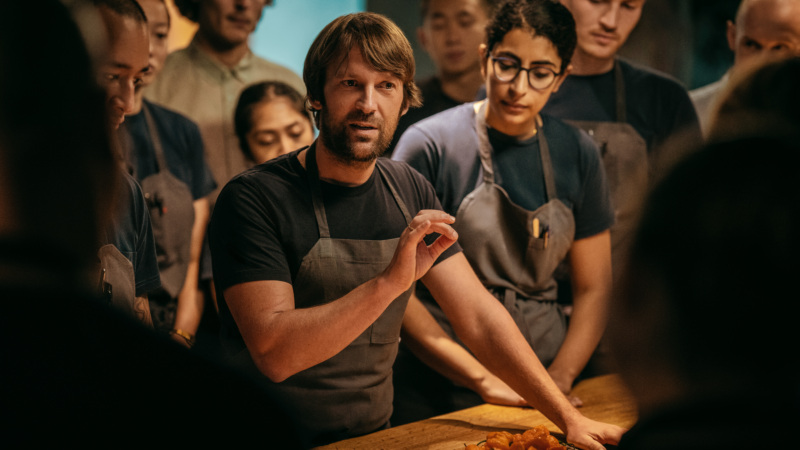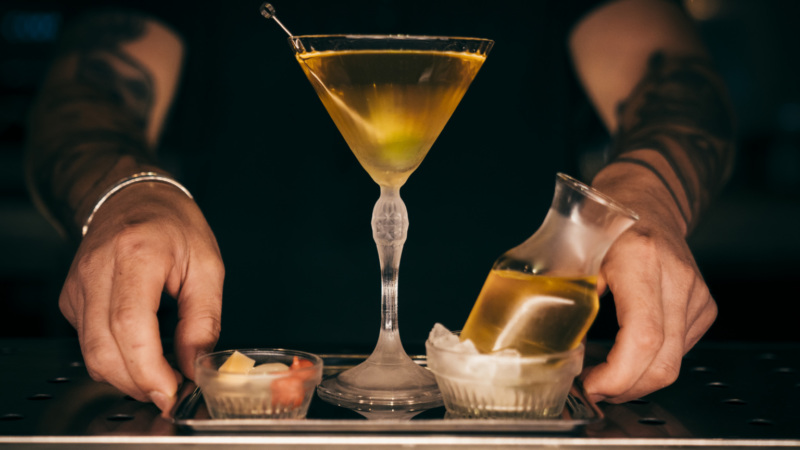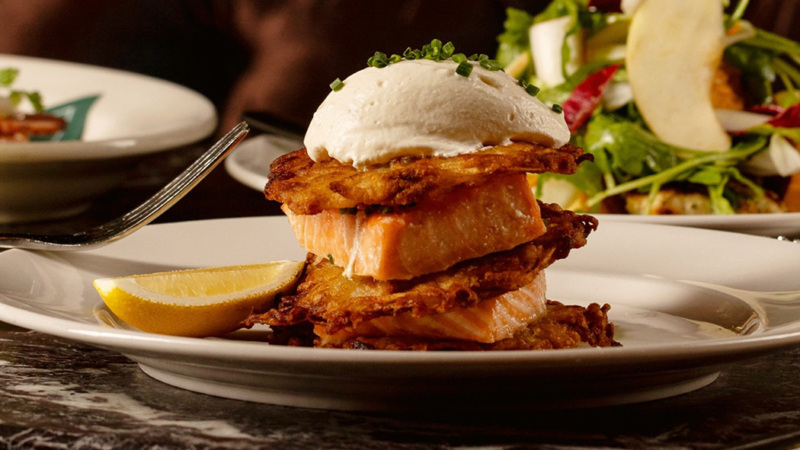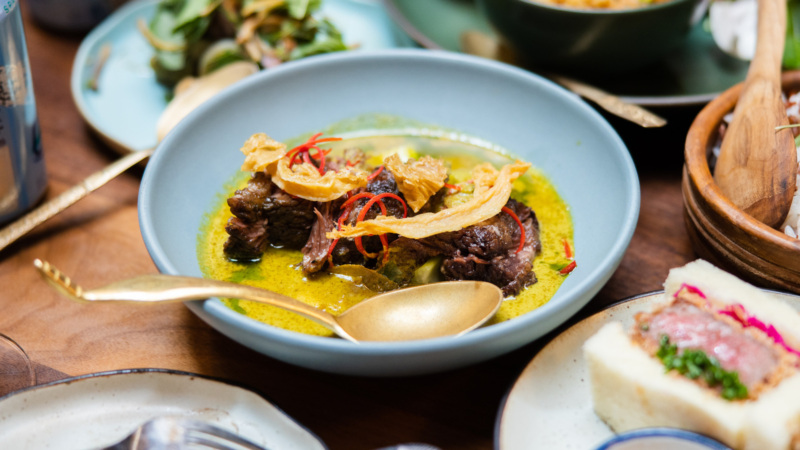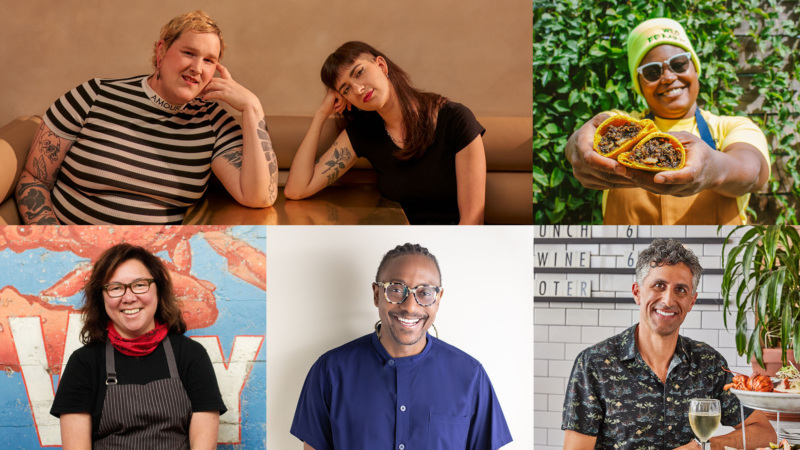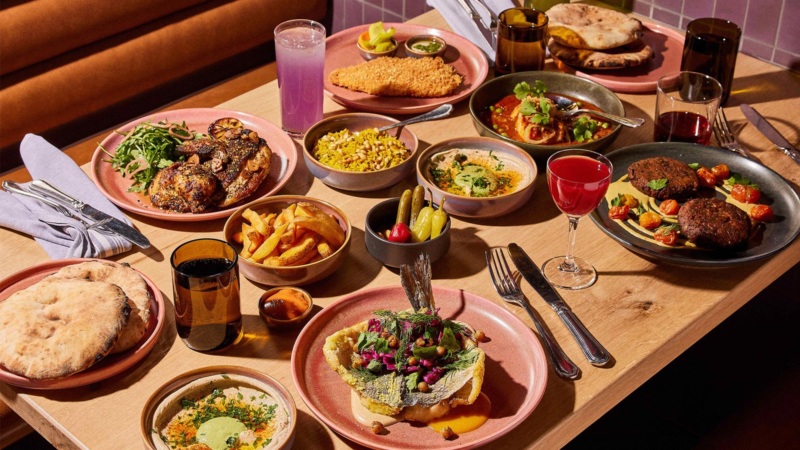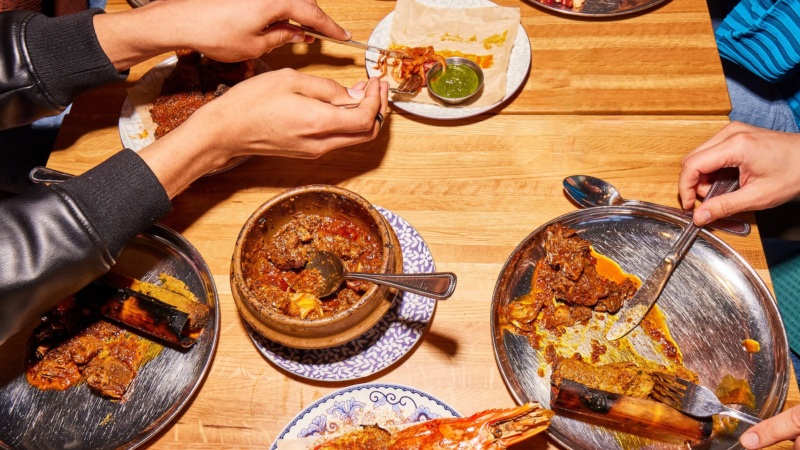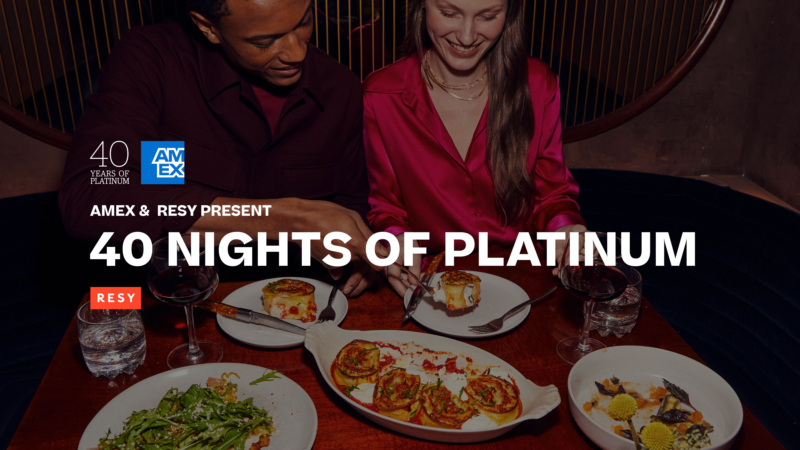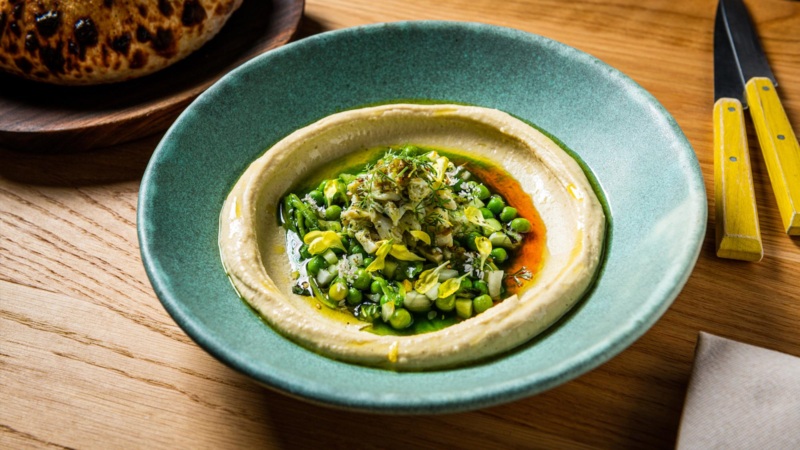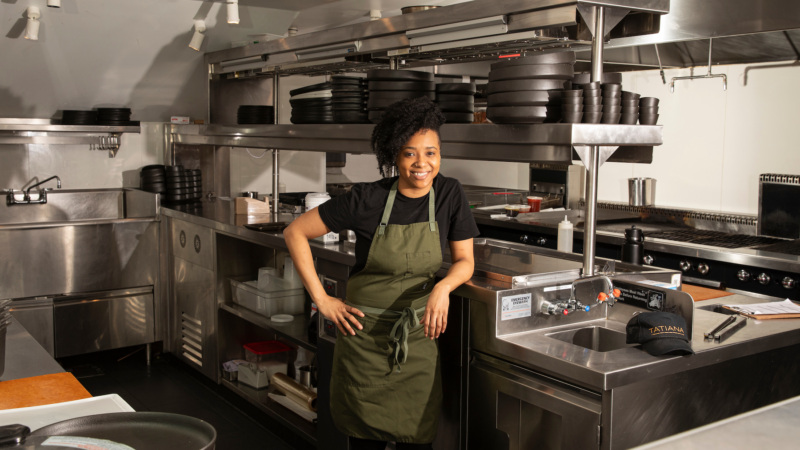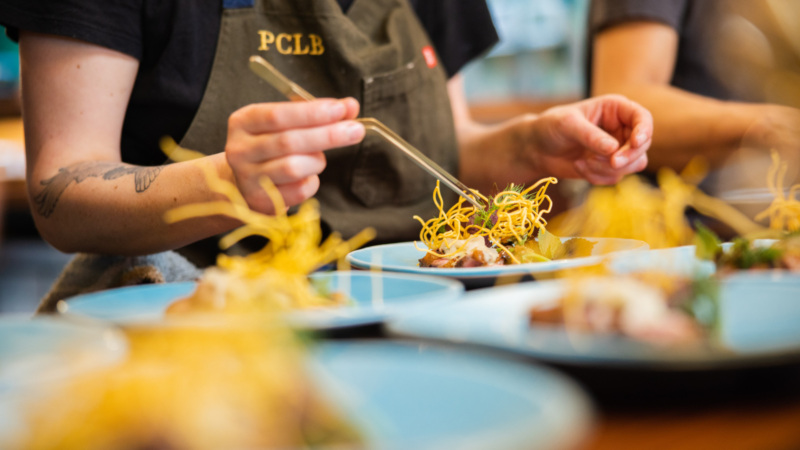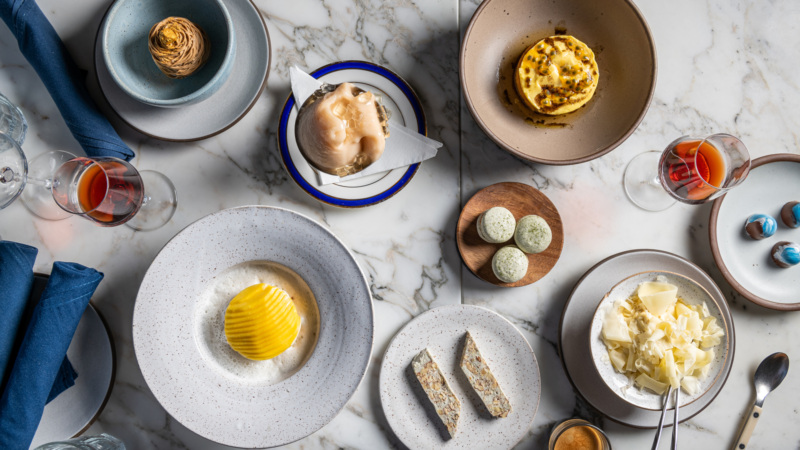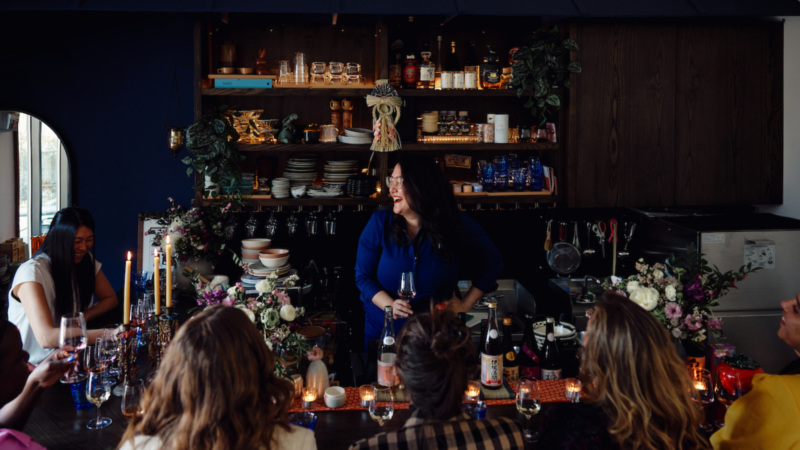
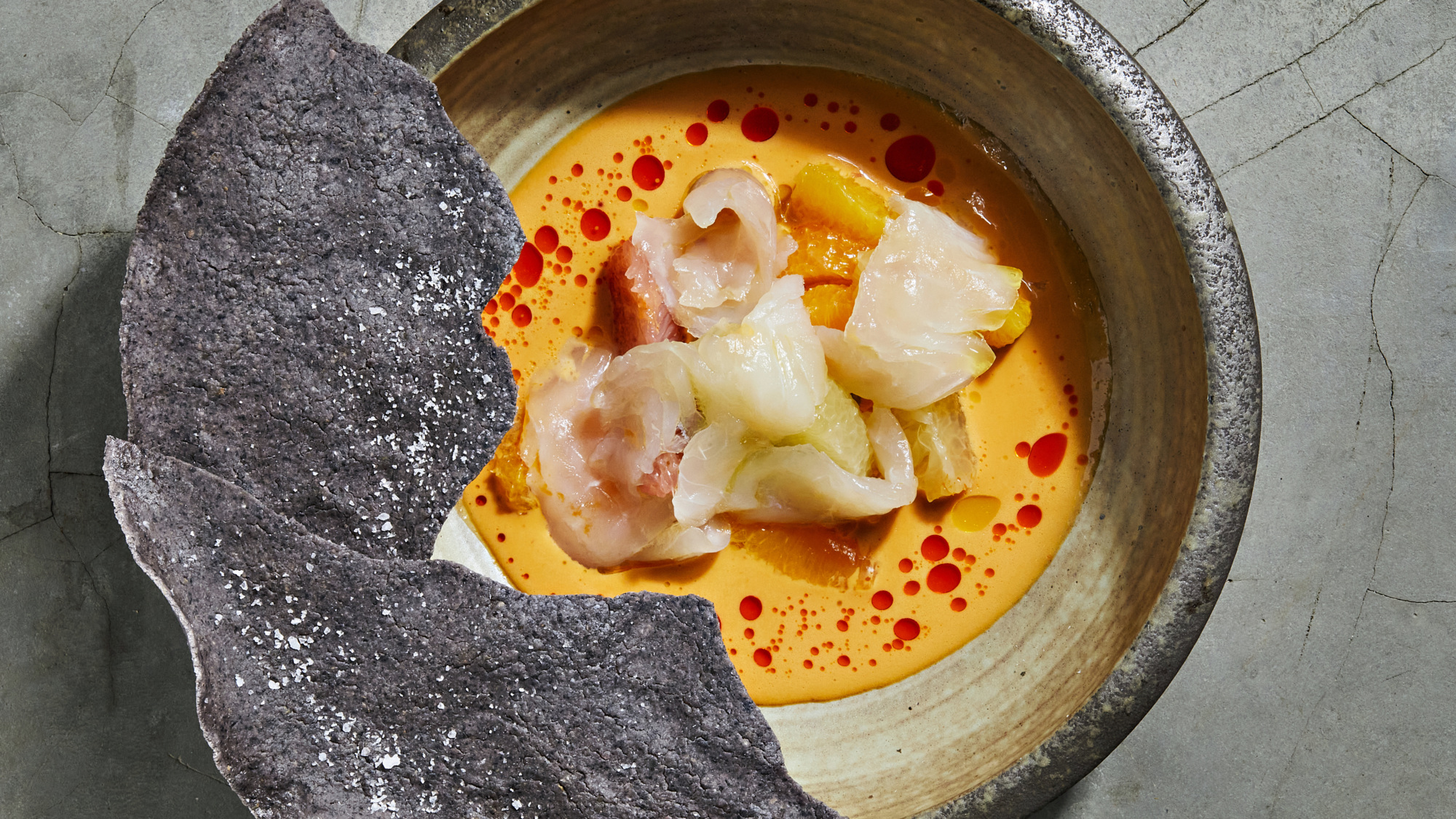
The Restaurants That Defined Dining in America in 2024
American dining’s defining characteristic this year can, no surprise, be summed up in a single word. That word is vibes, and if that sounds trite — although what does “trite” even mean after Brat Summer? — let’s unpack what that means in a restaurant context.
More than anything, vibes represent the overdue burial of chef worship, the freezing in carbonite of endless tweezer fussing and obsequious reverence, of the sort aptly skewered by “The Menu.” Vibes imply that dining is actually supposed to be fun again — that a great restaurant has to not only bring you pleasure on the plate but in 360-degree surround sound, as manifested by nonstop parties like Tâm Tâm in Miami and Heavenly Creatures in Portland. It means that interface and intimacy matter quite a lot, as exemplified by omakase jewels like neo in Houston and MĀBO in Dallas.
It translates, in short, to a word that might feel familiar: hospitality. Great restaurants in 2024 had a mandate to help you share in their pleasure, to join them in creating a space for joy.
This was not coincidental — it’s the result of seismic shifts we considered earlier this year. As we celebrated Resy’s 10th birthday, we took an opportunity to reflect on the profound changes of the past decade. The willful casualization inspired by Paris neobistros and wine bars has been adapted on these shores, not just for French-ish efforts like Philly’s My Loup but also for marvels like D.C’s Mexican powerhouse Pascual. At the same time, the reservation as contact sport has become a thing. If you want to party in the club, you need to get through the door.
It translates, in short, to a word that might feel familiar: hospitality. Great restaurants in 2024 had a mandate to help you share in their pleasure, to join them in creating a space for joy.
Indeed, one look at the list below (jump there now if you’re eager to dive in) and you can’t miss how the very terms by which we define fine dining have been fully transformed. Yes, a New York seafood counter can offer one of the city’s most pleasurable meals — and while Penny riffed on Troisgros’ iconic salmon with sorrel sauce, that feat was no more profound than its perfection of the shrimp cocktail. Cultures on the margins just a few years ago have seamlessly been woven into American dining — a mariscos joint in Chicago and a neo-Filipino storefront in Austin are now simply a natural part of our eating lexicon.
Each year, we summon all our Resy Hit List contributors in our key cities to weigh in on what defined dining in their town during the past year, and to choose a restaurant that contributed to the national evolution of food culture. The following list represents a snapshot in time — a look at restaurants that made a difference and gave us inspiration for what dining will look like tomorrow. These 16 restaurants set a tone for not only excellence but progress — and as we round out 2024, they remind us that American dining is better than it ever has been. More important, it’s evolving at a remarkable pace.
Jon Bonné is Resy’s managing editor, a two-time James Beard Award winner, and author of “The New French Wine” and other books. Follow him on Instagram. Follow Resy, too.
Penny NEW YORK | East Village
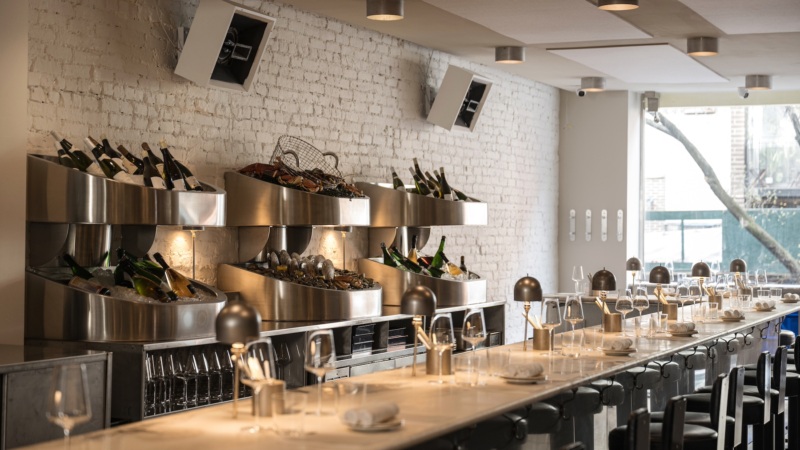
Photo by Teddy Wolff, courtesy of Penny
At first glance, Penny certainly doesn’t strike you as groundbreaking. It’s a raw bar and seafood counter — emphasis on the counter part, which occupies most of its narrow space just above Chase Sinzer and Joshua Pinsky’s first critically acclaimed restaurant, Claud. But somehow, just as they did with Claud, Sinzer and Pinsky gave New Yorkers another new classic restaurant to treasure for years to come. Stuffed squid, a creamy potato salad with octopus, and confit oysters served with cream cheese and crackers have become new standards all their own. Who needs a seafood tower when you can have an “ice box” with, quite possibly, the platonic ideal of shrimp cocktail? Of course, the wine list from Ellis Srubas-Giammanco is impeccable, but there’s Suntory on draft, because it’s 2024 and we don’t take on airs. To do all of this at a time when seafood-centric spots feel like a nationwide flex was testament to the skill, intuition, and expertise of Sinzer, Pinsky, and their entire team. We can only wait to see what they’ve got planned next.
-Deanna Ting

Photo by Teddy Wolff, courtesy of Penny
Budonoki LOS ANGELES | Silverlake

Budonoki’s concept was a very L.A.-friendly recipe for success: thrilling Japanese fusion in an electric, fun-inducing atmosphere. Thai chef Dan Rabilwongse (formerly of Bouchon, Hayato and Tsubaki) sprinkles Southeast Asian and French flavors into creative izakaya fare, like a fermented Thai sausage, that, when paired with arancini-like rice balls and a fish-sauce slaw, make for a singularly perfect bite. The tight menu, which includes sushi and grilled meats, also shines with an Asian take on creamy gnocchi made with rice cakes, shimeji mushrooms, and grated truffles. Food here was best paired with a cold glass of beer or a shochu-forward cocktail (with those adorable animal mugs!) amidst lively conversations in a space that gave off throwback nightclub vibes.
-Jean Trinh

Pascual WASHINGTON, D.C. | Capitol Hill
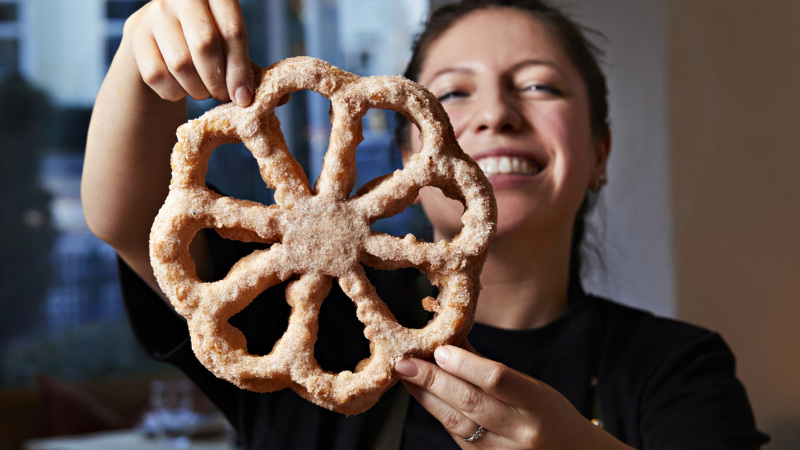
Photo courtesy of Pascual
Contemporary Mexican cuisine has matured enough in the United States to have prompted a second generation of restaurants, as it were. Pascual is a perfect example, in that Matt Conroy and Isabel Coss, the couple who run the two halves of the kitchen, met at New York’s Empellón. (Coss also worked at Cosme, while Conroy helmed the kitchen at plant-based Oxomoco in Brooklyn.) The duo first opened Lutèce after coming to D.C., which brought a very East Paris neobistro sensibility to Georgetown. And Pascual similarly shows a freewheeling, curious sensibility but transports it to a different cuisine. Yes, there’s a trompo for al pastor; and wood-fired coals bring a smoky punch to much of the menu. Tortillas are made in-house, as are Coss’ exceptional pastries. But the menu reveals a springboard of creativity — Conroy’s parsnip tamal with a mole blanco, or Coss’ pear millefeuille with parsnip, a retuned French classic. This is the very definition of where groundbreaking Mexican American cooking sits today: not haute, not rustic, but familiar and new and endlessly compelling.
-Tim Ebner

Photo courtesy of Pascual
Nàdair Restaurant ATLANTA | Woodland Hills
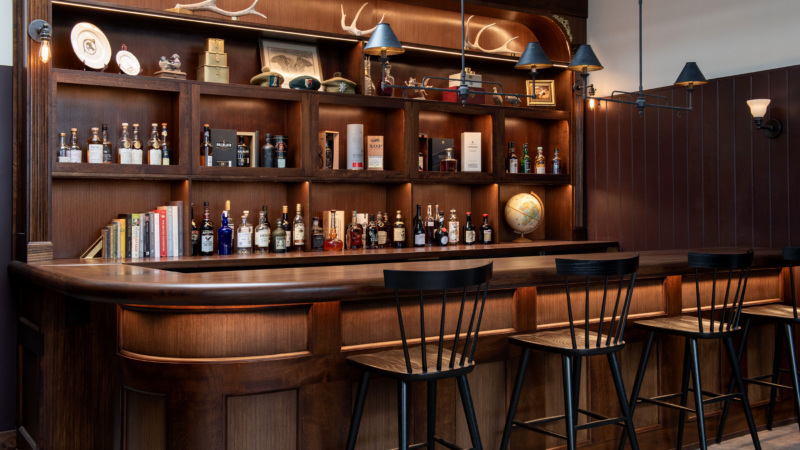
Despite the continued success of Gunshow, a lot of people weren’t sure Atlanta’s Kevin Gillespie would return to the line again … him included. But with this concept, a wood fire was relit as he returned to the way of his nature. Uniquely blending Scottish, Southern, and New England identity, Nàdair has become something entirely its own. Forget the Scotch eggs and haggis — enter modern interpretations like a cullen skink with smoked rock shrimp, salmon bacon, and oatcake crumbles; Scottish cheese dumplings with local mushrooms; and smoked lobster from Gillespie’s second home in Maine, with a Thermidor sabayon. Not even a year in, it’s not only earned a Michelin recommendation, but bragging rights in best-of lists near and far. (Including this one.)
-Su-Jit Lin

Tâm Tâm MIAMI | Downtown
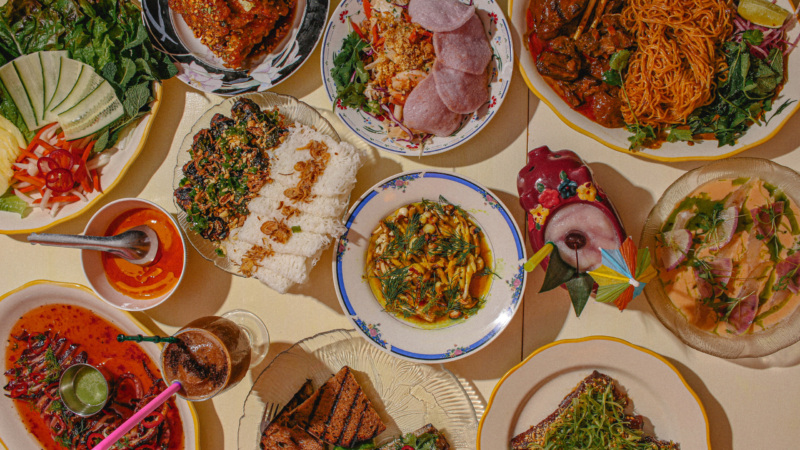
To the surprise of the team behind Tâm Tâm — self-taught chef Tam Pham and his husband Harrison Ramhofer — they far exceeded their desire to show Miami how vibrant Vietnamese cuisine can be. They also took that message to a national stage, with their unique combo of influences. Pham and Ramhofer (the GM and sommelier) were inspired by the quán nhậu of Saigon — lively taverns where the food facilitates drinking, much like a Japanese izakaya. That translates into shareable plates like crispy fish sauce chicken wings and tamarind-glazed pork ribs, alongside warm-weather wines and frozen mai tais, all reminders that Miami’s tropical climate approximates Vietnam’s. Best of all, Tâm Tâm fits perfectly with Miami’s energy — from the diner-style counter seating to the ventanita window, it nods to the Cuban cafe that preceded it in the space, while showing us what the future looks like.
-Lyssa Goldberg

Mariscos San Pedro CHICAGO | Pilsen
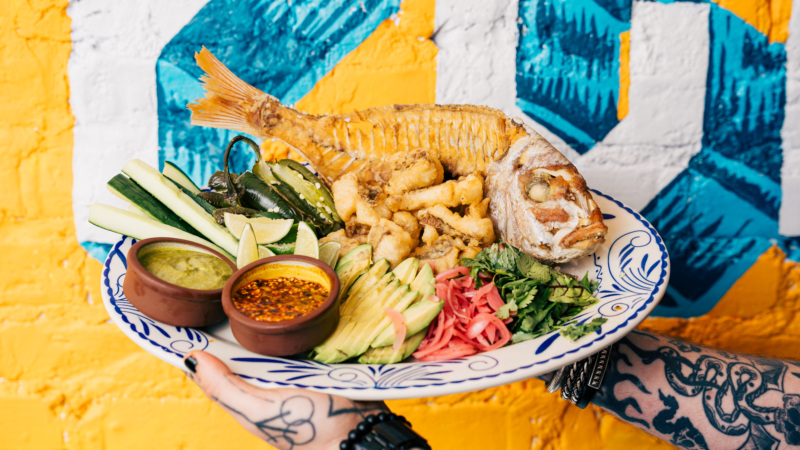
The cheeky cartoon fish on the front window provides a playful juxtaposition to the artful seafood dishes at this new Chicago hit. While the food was serious — the chefs made names for themselves with restaurants like Taqueria Chingon and Obélix — the vibes are decidedly fun. Perhaps that’s why on any given night, Mariscos San Pedro is packed, with diners digging into oysters with passionfruit mignonette, Baja fish tacos, and a beautiful whole dorade served with multiple salsas. It was, among other things, the Poilevey family showing once again why they’re masters of Chicago hospitality.
-Ariel Kanter

My Loup PHILADELPHIA | Rittenhouse
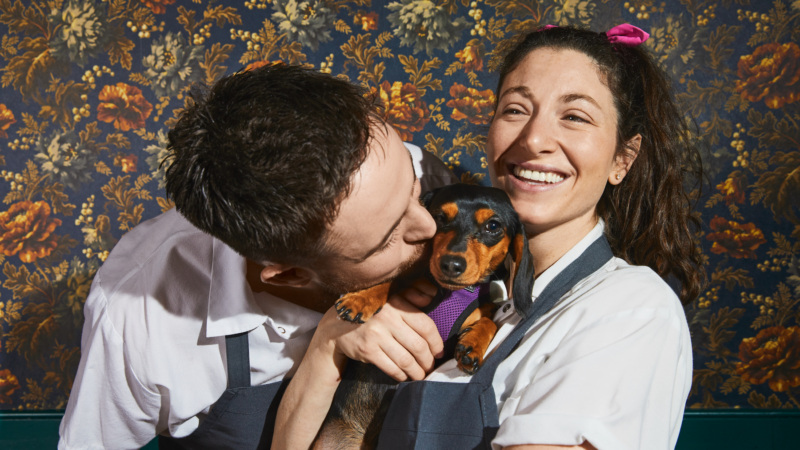
There was a reason why even bar seats filled up as soon as reservations would open at Philly’s My Loup. Chef-owners Alex Kemp and Amanda Shulman have nailed a style of dining that we all crave today: casual, intentional, fun, and rooted in technique. This tribune to French Canadian fare is the kind of place where you can eat roast beef wrapped around fries with your hands while drinking a $300 bottle of Burgundy, or split bouillabaisse for two with a zero-proof spicy paloma spritz. Over the summer, the dynamic duo opened pop-up Amourette in the serene courtyard of the Art Alliance building, just off Philly’s Rittenhouse Square. It was a delicious moment in time that reflected why we’ll keep paying close attention to the couple’s next moves.
-Sarah Maiellano

mijoté SAN FRANCISCO | Mission District
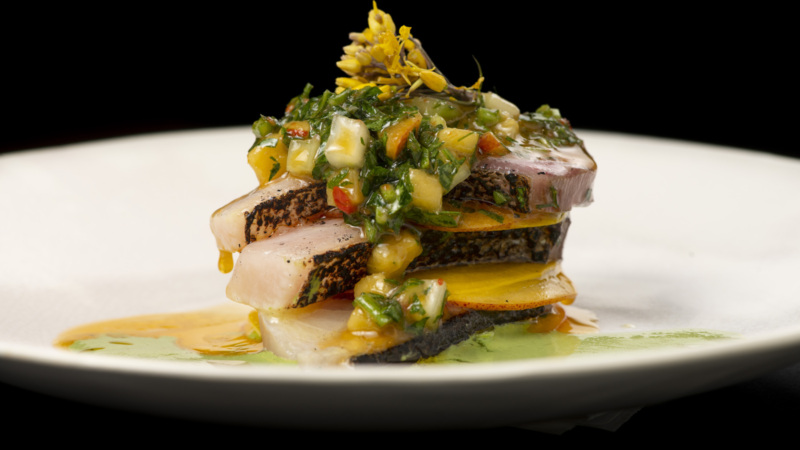
We’ve said this before and we’ll say it again: If there’s one Bay Area restaurant where we wish for a monthly standing reservation, it’s Mijoté — chef Kosuke Tada’s counter is the closest you’ll come to dining in Paris’ new-wave bistros without hopping on a plane (which makes sense, because the Japanese chef cooked at some of the best spots in France). The menu is set with optional — but recommended — supplements, the wine is natural, and the restaurant is housed in an old sushi spot. Sit at the wooden counter and watch the chefs frantically run back and forth from the kitchen, carving meats like a show and saucing plates tableside — it’s such a good time.
-Omar Mamoon

Acamaya NEW ORLEANS | Bywater
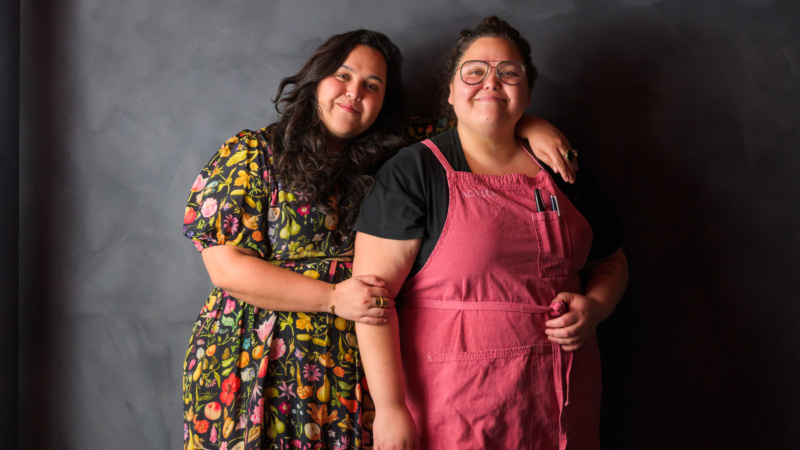
Photo by Paprika Studios, courtesy of Acamaya
James Beard Award-nominated chef Ana Castro opened Acamaya, with her sister Lydia Casto in June. Their seafood-centric menu — which arrives with a glossary — celebrates both the sisters’ native Mexico City culture and precolonial Mesoamerican cooking. The most personal dish might be the earthy arroz negro, which is jammed with seafood and huitlacoche, a fungus grown among corn crops. So central is it to the Castro style that the highly regional, highly perishable ingredient is overnighted from a purveyor on the West Coast. Add in captivating design — lime-washed walls, and carved stone light fixtures, and a wall of carved breeze blocks that Ana used a U-Haul to drag back from the border. Also flatware, tables, and chairs from Mexico City that the sisters imported, determined to convey the elegance of Mexican décor. The net result is an agenda-defining restaurant in a city not (yet) known for this particular cuisine.
-Jyl Benson

Photo by Paprika Studios, courtesy of Acamaya
Heavenly Creatures PORTLAND, OR | Sullivan's Gulch
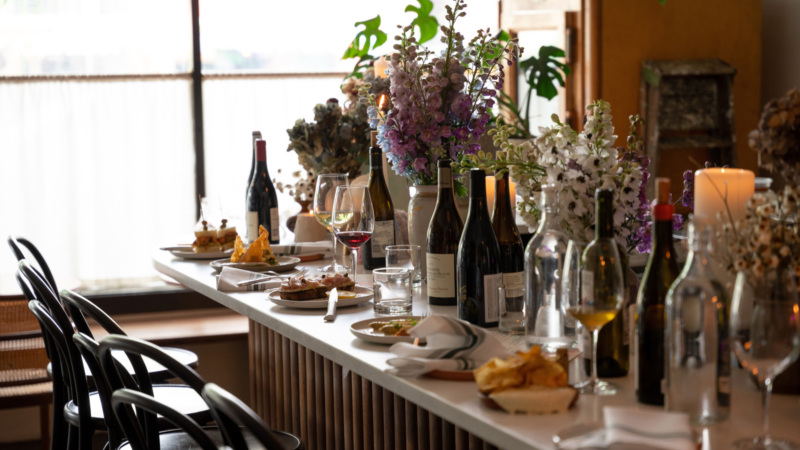
The duo that created St. Jack, one of Portland’s defining entries into the modern bistro genre, went on to create Heavenly Creatures in late 2022. Certainly it’s not the first wine bar with a short-but-sweet menu of French-inspired drinking foods and deep cuts of French wine. But the menu here is more dreamy than canonical French, and co-proprietor Joel Gunderson’s virtuosity as a thoughtful wine buyer means you’ll be encountering some truly unique bottles. No wonder it quickly established cult-like status in a town that knows its wines — with snacks like whipped Camembert with potato chips and young-yellowtail toast. Servers roam through the maze of tables with open bottles in hand, happy to walk guests through Gunderson’s deft and mostly European list, from high-end Champagne to Alsatian orange wine. All told, Heavenly Creatures has shifted perceptions of what a wine bar could look like — not just in Portland but anywhere.
-Samantha Bakall

MĀBO DALLAS | Preston Center
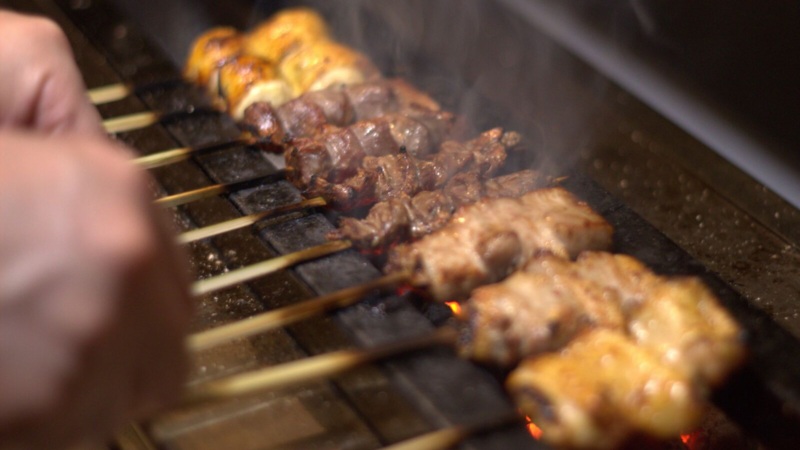
One of this year’s most impressive Dallas restaurants comes from the city’s unsung “yakitori king,” as chef Masayuki Otaka was once called. MĀBO is Otaka’s first restaurant by his own design. (We’re not counting Teppo, which he acquired from his boarding-school pal Teiichi Sakurai in 2008, and ran until its closure in 2022.) At this eight-seat counter, Otaka has fashioned a setting that shows the extent to which Dallas has embraced exceptional Japanese cooking. Binchotan-grilled skewers are the specialty, something Otaka knows well after decades fanning the charcoals at Teppo, but they’re only part of his showmanship; the full lineup typically includes soup, chawanmushi, a sashimi set, tempura-fried vegetables, and dessert. Dallas has finally gotten recognition for our excellent Japanese restaurants, and it’s a rare pleasure to sit in front of one of the men largely responsible for it.
-Amanda Albee

neo HOUSTON | Hyde Park
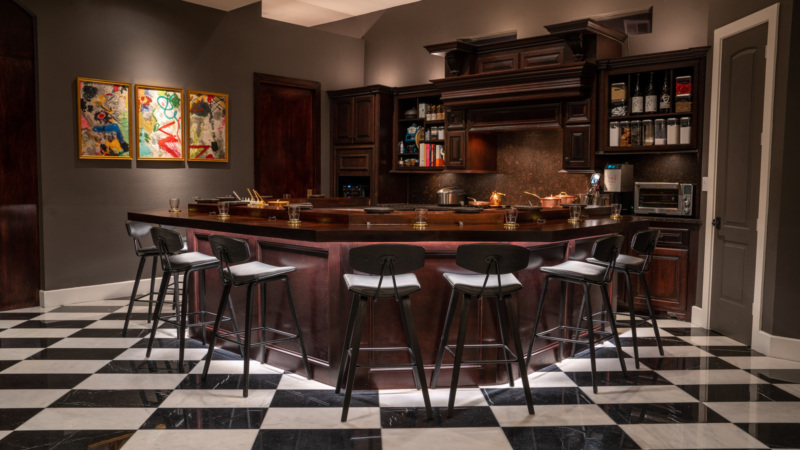
Four and a half years ago, in the summer of 2020, Jeremy Truong and former Uchi chefs Luis Mercado and Paolo Justo quietly opened an eight-seat omakase counter tucked discreetly inside a luxury menswear boutique. With no sign on the outside, you’d never know if you were passing by. The 18 to 20 courses also included complimentary sake and wine. Today, after renovations, Neo feels even more unique — namely because of its “avant garde-inspired” approach to omakase, which highlights a dry-aging fish program and incorporates global techniques. You might be served sakura-smoked Ora King salmon nigiri with shaved freeze-dried creme fraiche and chives, their ode to the lox bagel (and perhaps, in its way, to Momofuku Ko). For another, you might get lion’s mane mushrooms, first poached in brûléed onion stock then grilled, then served with mole rojo. Neo lies in a realm beyond omakase — it’s the tying together of Houston’s many cultural threads in one seating.
-Vickie An

OKO AUSTIN | Central East Austin
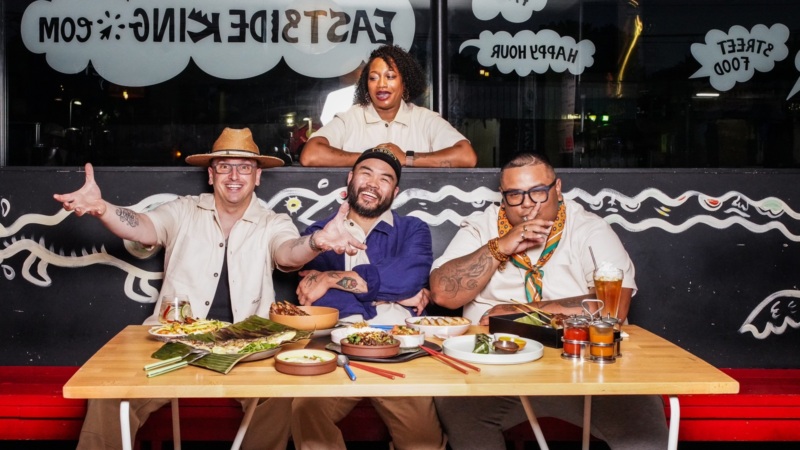
OKO opened in late 2024 as a Filipino restaurant with modern Texas twists, taking over the old Ah Sing Den space on Austin’s East Side. Run by chef Harold Villarosa, born in the Philippines, raised in the Bronx, and pedigreed at some of New York’s top restaurants, he teamed up with “Top Chef” winner Paul Qui to re-create traditional Filipino dishes like oxtail kare-kare stew made with nine-hour braised oxtail in peanut butter sauce; lechon (crispy pork belly); and kinilaw (hamachi in coconut vin and topped with salmon roe). As for dessert, the halo halo tastes like our childhood dreams, with ube ice cream, shaved ice, and Fruity Pebbles as sprinkles. We’ll be back many times in 2025, and we salute that the new Filipino era of dining in America has extended to Texas in the most wonderful way.
-Adele Hazan

Baleia BOSTON | South End
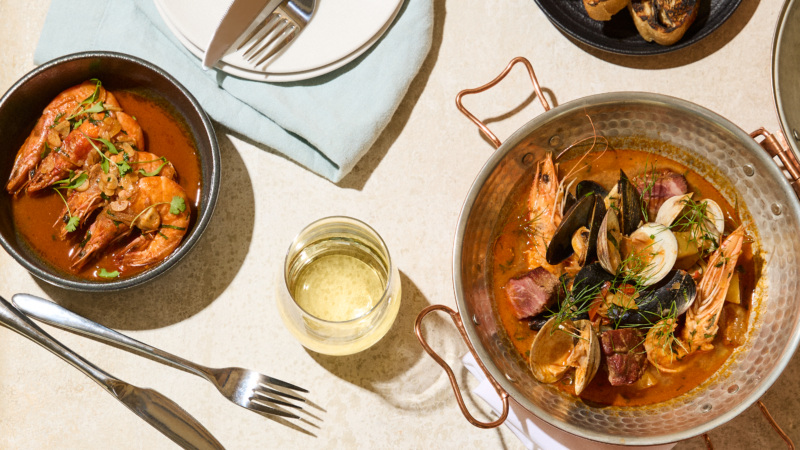
Portuguese food, if you’ll pardon our use of the following expression, is so hot right now. And with the opening of Baleia in Boston’s South End, the Coda Group — whose existing restaurants like SRV and Gufo offer varying shades of Italian — revealed the city’s craving for the flavors of that other Mediterranean peninsula, too. The airy, light-filled space recalls a fishing village on Portugal’s Atlantic coast, and the impression is further cemented by coastal-influenced cooking like pork-and-seafood cataplana stews, grilled sardines smothered with a turmeric chermoula, and impossibly fluffy salt cod bolinhos that may make you question whether you’ve ever really had a proper cod fritter. Baleia not only reaffirms Boston’s pride of place on the Atlantic coast, but also is a totem of Massachusetts’ strong and long-standing ties to a certain coastal country across the sea.

Present Tense NASHVILLE | Wedgewood-Houston

Omakase blew up in Nashville this year, like pretty much everywhere else. And the city has the side benefit of FedEx planes landing constantly at its Memphis hub, ensuring that seafood can travel here in a day or so. What sets Present Tense apart, though, is a daily specials list that shows how you transform that freshness into brilliance. So whether you order off the á la carte menu or go omakase, expect beautiful minimalist plates that allow the ingredients to shine. And the full à la carte leans as much izakaya as omakase — plates like Japanese sweet potato with lovage and cream, or noodles with squid and ‘ndjura, revealing chef Ryan Constanza’s sense of whimsy. Because its owners also operate a sake company, there’s a remarkable selection to pair with your meal. It’s all today’s Japanese trends rolled into one remarkably fun space.
-Chris Chamberlain

Lowland CHARLESTON | Lower King
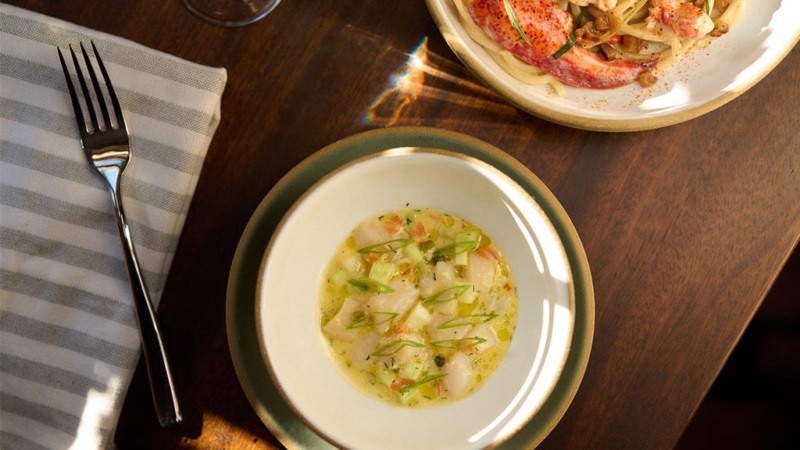
Chef Jason Stanhope may have opened Lowland in late 2023, but this was the year it came together to define where Charleston dining is right now. Despite being one of the hotter openings in recent years, it somehow remains low-key while delivering on the expectations that came with Stanhope’s 16 years at nearby FIG. Once you’ve secured a spot in the dining room of the updated circa 1834 Lequeux-Williams House, take a moment to appreciate the lived-in details like the custom mural upstairs, punctuated with the pint-sized corner bar. The menu represents the best version so many items in the Lowcountry, as far as we’re concerned: biscuits, crudo, celery salad, bucatini, and a knockout tavern burger. And if you need more? Sneak around back and order from the full menu at the bar as well.
-Sam Spence

Explore our picks from coast to coast:
Resy city contributors: Amanda Albee (Dallas), Vickie An (Houston), Samantha Bakall (Portland), Jyl Benson (New Orleans), Chris Chamberlain (Nashville), Tim Ebner (Washington, D.C.), Lyssa Goldberg (Miami), Adele Hazan (Austin), Ariel Kanter (Chicago), Su-Jit Lin (Atlanta), Sarah Maiellano (Philadelphia), Omar Mamoon (San Francisco), Sam Spence (Charleston), Deanna Ting (New York), Jean Trinh (Los Angeles), Eric Twardzik (Boston).




























